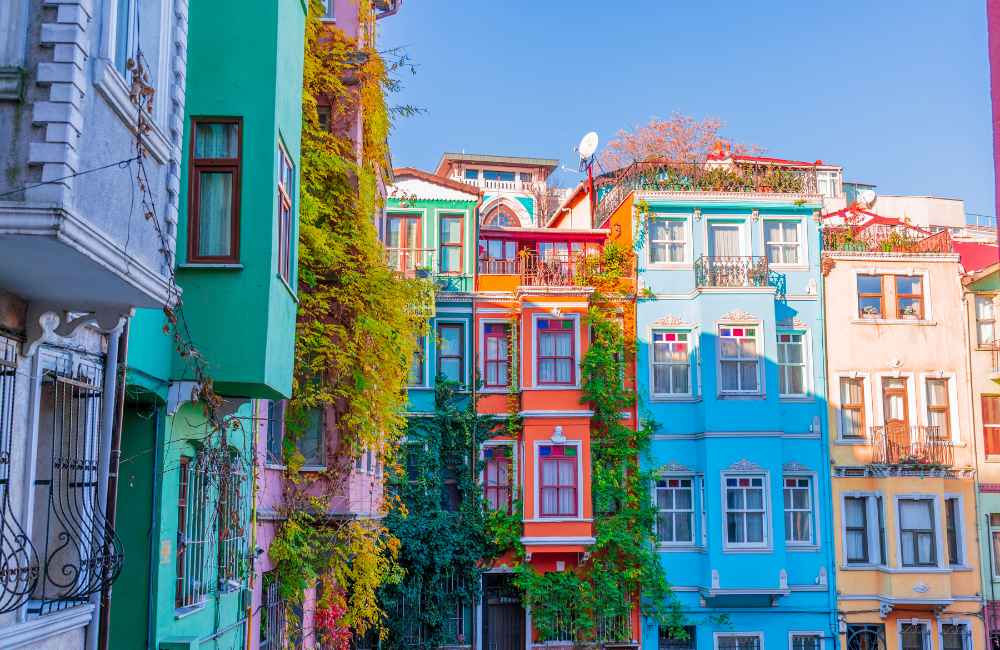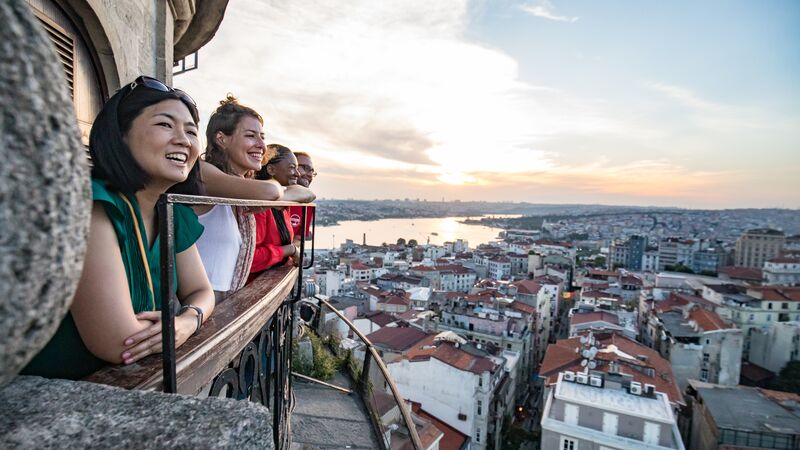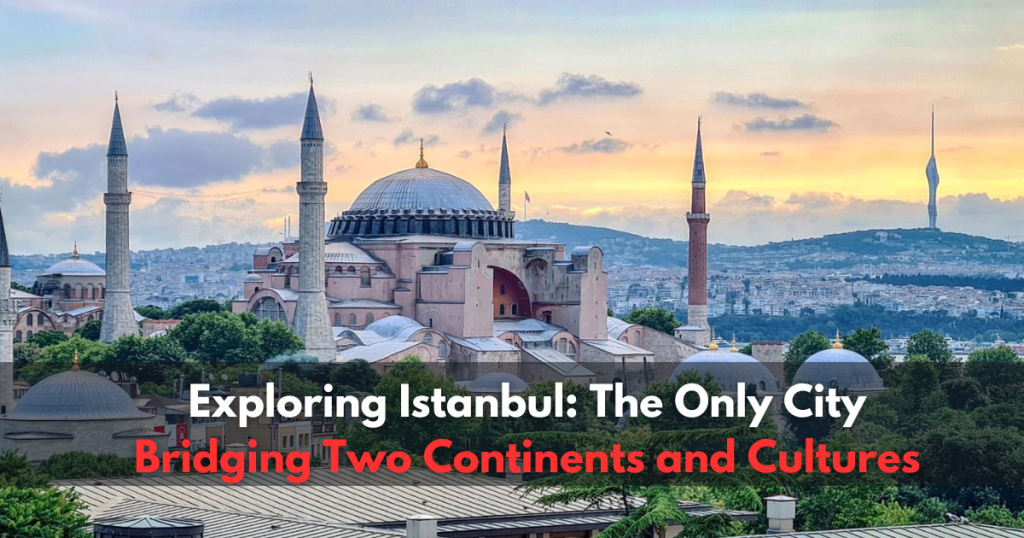Introduction to Istanbul’s Unique Identity
Istanbul lies between two continents. It is Turkey’s cultural and historical center and It is a stunning blend of East and West. It is the only city where Europe and Asia intertwine and has a vibrant blend of cultures, traditions, and lifestyles. Istanbul has charmed travelers for centuries. Its ancient wonders and bustling bazaars do so. The Bosphorus Strait enhances this unique cultural landscape. It is a natural boundary that divides the city’s European and Asian sides. This article explores Istanbul. We cover its rich history, iconic landmarks, and diverse neighborhoods. We also discuss its unique blend of cultures. Together, they make it an unforgettable destination.
The Historical Significance of Istanbul
:max_bytes(150000):strip_icc()/GettyImages-569029413-bdf2c944e05943ada1f896c958863354.jpg)
From Byzantium to Constantinople to Istanbul
Istanbul has seen several transformations throughout history. Founded as Byzantium in 660 BCE, the city was later known as Constantinople. In 330 AD, the Roman Emperor Constantine the Great made it the capital of the Roman Empire. Under the Ottoman Empire, it was renamed Istanbul. It became a hub of trade, culture, and religion. The city’s architecture reflects its history. It blends Roman, Byzantine, and Ottoman styles. They are a testament to its storied past.
Key Historical Landmarks
-
Hagia Sophia: It was a church, then a mosque, and now a museum. It epitomizes Istanbul’s layered history.
-
Topkapi Palace was the main home of the Ottoman sultans. It shows the opulence of the Ottoman era.
-
The Blue Mosque (Sultanahmet Camii): This mosque is famous for its blue-tiled interiors. Its intricate design symbolizes Istanbul’s religious diversity.
Bosphorus: The Gateway Between Continents
The Strategic Importance of the Bosphorus Strait
The Bosphorus Strait is a key waterway. It links the Black Sea to the Sea of Marmara. Its geographical significance is great. It is the lifeline between Istanbul’s European and Asian sides. This gives the city its unique bicontinental identity. The scenic waterway is a busy route. Ferries, yachts, and ships crowd it. They bridge cultures and connect people from around the world.
Experiencing the Bosphorus
Visitors can explore the Bosphorus by taking a ferry cruise. It offers great views of Istanbul’s skyline, palaces, and waterfront mansions. A sunset cruise offers stunning views of Istanbul’s historic and modern sights. It lets tourists experience the city’s magic from both sides of the Bosphorus.
The Distinct Neighborhoods of Istanbul

The European Side: A Blend of Modernity and Tradition
-
Sultanahmet is the historical heart of Istanbul. It has the Hagia Sophia, the Blue Mosque, and the Basilica Cistern. Walking through Sultanahmet is like stepping back in time. Every street echoes stories from Istanbul’s Byzantine and Ottoman past.
-
Taksim Square and Istiklal Avenue are the heart of modern Istanbul. They are full of shops, cafés, and art galleries. This area is the cultural heart of Istanbul’s European side. It has a vibrant nightlife and a lively art scene.
-
Galata: This neighborhood has the famous Galata Tower. It offers great views of the Bosphorus and the Golden Horn. Galata’s cafés, vintage shops, and historic synagogues show Istanbul’s cosmopolitan charm.
The Asian Side: A Taste of Local Life
Many tourists flock to Istanbul’s European side. But, the Asian side is more tranquil and authentic. The neighborhoods here feel more residential. They show the daily lives of Istanbul’s residents.
-
Kadikoy: It’s known for its food markets and relaxed vibe. It’s a perfect spot for visitors wanting to taste local life. Kadikoy, with its fresh markets, boutiques, and street art, reflects Istanbul’s spirit. It is both modern and traditional.
-
Uskudar: A historic area, Uskudar has stunning waterfront views and a conservative vibe. Visitors can enjoy a peaceful stroll along the seaside promenade. They can also visit the Maiden’s Tower, a small islet with a legendary history.
The Cultural Fusion of Istanbul

Cuisine: A Melting Pot of Flavors
Istanbul’s food scene beautifully reflects a blend of European and Asian cultures. Turkish cuisine blends Ottoman, Mediterranean, and Middle Eastern flavors. It offers a unique culinary experience.
-
Street Food: Delicious food fills the streets of Istanbul. Try simit (a sesame-crusted bread), midye dolma (stuffed mussels), and Turkish tea in tulip-shaped glasses.
-
Fine Dining: For a refined meal, try Istanbul’s restaurants. They blend traditional Turkish recipes with modern techniques. Popular dishes include kebabs, mezes (appetizers), and baklava for dessert.
Art and Architecture: East Meets West
Istanbul’s architecture is a fascinating blend of Eastern and Western influences. Byzantine structures like the Hagia Sophia coexist with Ottoman mosques. In areas like Levent, modern skyscrapers add a twist to the skyline.
-
The Grand Bazaar and Spice Bazaar: They show Istanbul’s rich trading history. The Grand Bazaar is one of the world’s oldest, largest covered markets. Visitors can find traditional Turkish carpets, ceramics, and jewelry there. The Spice Bazaar, with its aromatic spices and dried fruits, is a feast for the senses. It offers a taste of Turkey.
-
Modern Art Scene: Istanbul has a growing art scene. Galleries and museums showcase contemporary Turkish and international artists. The Istanbul Modern and Pera Museum are popular spots for art enthusiasts.
The Spiritual Mosaic of Istanbul

Islam, Christianity, and Judaism in harmony.
Istanbul is home to a unique spiritual mosaic where different religions coexist harmoniously. Islam is the main religion. Yet, the city’s history as a trade and cultural crossroads has fostered tolerance. Thus, Christian churches, synagogues, and mosques stand side by side.
-
Church of St. Anthony of Padua: This Catholic church on Istiklal Avenue is one of Istanbul’s largest and most important. It is a peaceful retreat in the busy city.
-
The Neve Shalom Synagogue is a symbol of Istanbul’s Jewish community. It shows the city’s religious diversity and its history as a safe haven for many communities.
Experiencing Istanbul as a traveler

Practical Tips for Exploring Istanbul
-
Transportation: Istanbul has a vast public transit system. It includes trams, buses, ferries, and a metro. The Istanbulkart, a prepaid travel card, makes city travel easy.
-
Best Time to Visit: The best times to visit Istanbul are spring (April to June) and autumn (September to November). The mild weather and smaller crowds allow travelers to explore comfortably.
-
Must-Try Experiences: Don’t miss a Turkish bath (hammam). Also, explore the Bosphorus on a ferry. Finally, enjoy traditional Turkish tea or coffee in a local café.
Shopping and Souvenirs
Istanbul offers an array of unique souvenirs that reflect its rich cultural heritage. Tourists love handmade carpets, Turkish delight, and ceramic tiles. In the Grand and Spice Bazaars, travelers can bargain for souvenirs. They can also experience Istanbul’s vibrant shopping culture.
Conclusion: Istanbul – A City of Endless Discovery
Istanbul’s allure lies in its dual identity as both a European and Asian city. Its rich history, diverse culture, and modernity captivate visitors. It offers a unique view of the blending of two worlds. For an unforgettable trip that links the past and present, visit Istanbul. It bridges the East and West and is unlike any other place. Istanbul invites you to explore its beauty and culture. Wander ancient mosques, savor local cuisine, and gaze across the Bosphorus.


